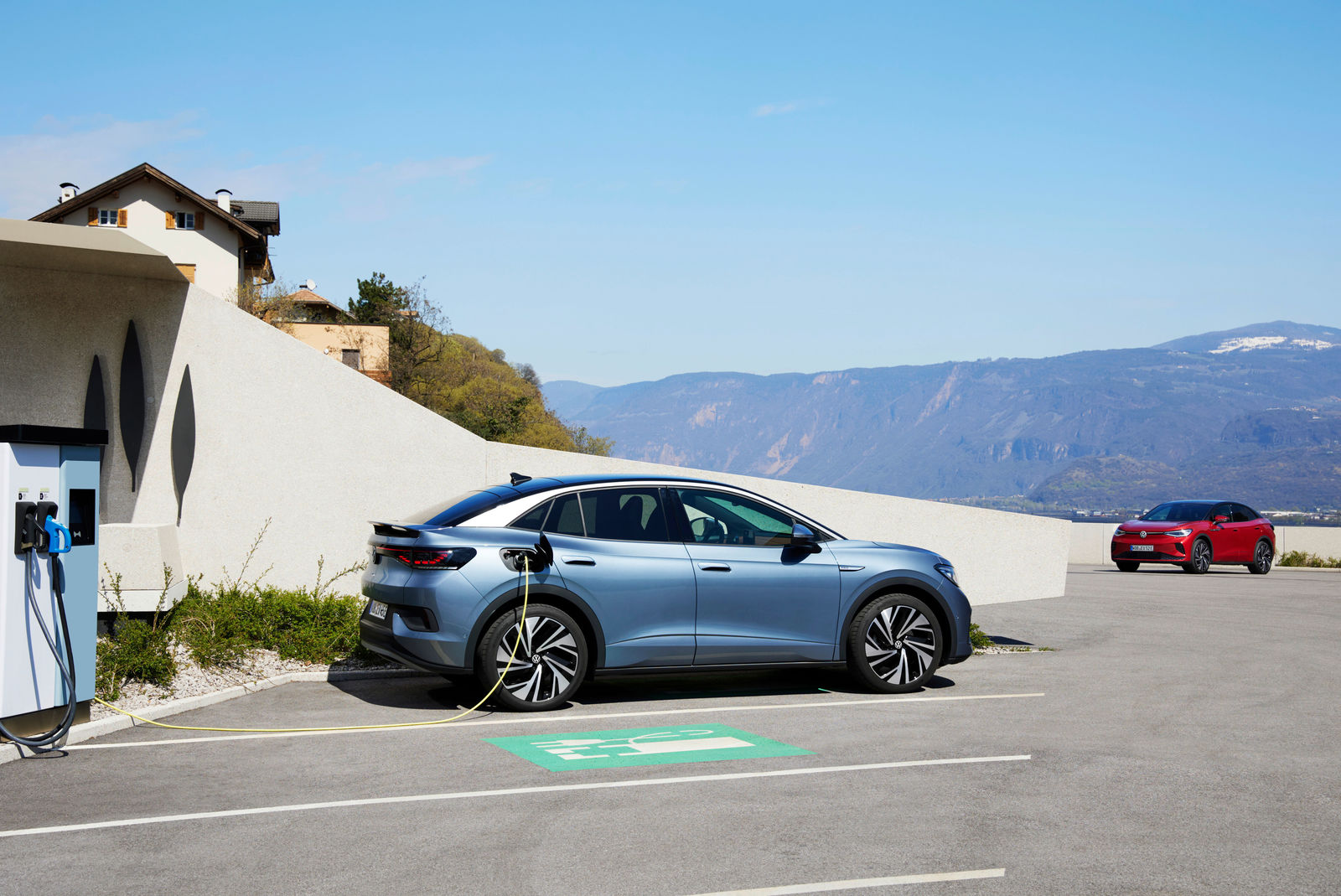Lithium-ion battery with 77 kWh. The high-voltage battery plays a decisive role in the ID.5’s all-round nature: with its 77 kWh net battery content, it gives the ID.5 Proand ID.5 Pro Performance models a projected practical range of up to 520 km (WLTP), while the ID.5 GTX achieves up to 490 km (WLTP). The housing is made from aluminium profiles and is protected by a solid underbody guard and strong frame. Inside there are twelve battery modules, each of which houses 24 cells with a flexible outer shell. A floor plate with built-in water channels keeps the modules at their ideal operating temperature of around 25 degrees Celsius – this benefits power output, fast DC charging and the service life. After eight years of operation or 160,000 km travelled, the battery still has at least 70 per cent of its original net capacity – protected by a Volkswagen warranty. The battery systems are produced at the Volkswagen Group Components site in Braunschweig, Germany.
Charging ecosystem. In addition to the models in the ID. family, Volkswagen offers a universal package for convenient, connected and sustainable charging for its electric cars. Customers are able to book the package that is right for them when purchasing their electric vehicle. The portfolio ranges from wall boxes for charging at home, including an installation service, to a tailored green power tariff, through to a separate charging service for charging at public stations – all from a single source without any additional outlay. Volkswagen’s charging eco-system offers the ideal solution for any charging situation – whether on a long journey, out and about, or at home.
Elli: green energy for charging at home. The ID.5 and ID.5 GTX, which are produced in the Zwickau factory in Germany, are handed over to European customers with a carbon-neutral balance sheet. If these customers then charge their vehicles with green energy, they are almost completely climate-neutral. Via Elli, a Volkswagen Group brand, customers can have their garage at home supplied with Volkswagen Naturstrom, which is generated from 100% renewable energy. The ID. Charger, for example, is ideal for charging at home.
Rapid charging while out and about. We Charge provides ID.5 drivers with access to one of Europe’s largest and fastest growing charging networks – with currently more than 300,000 charging points. Using the standard Mode 3 cable, the E-SUV coupé can also be charged with up to 11 kW of alternating current (AC), even when it is out and about. With the maximum DC charging capacity, the battery can provide up to 390 km of range in the ID.5, or 320 km in the ID.5 GTX (WLTP), in around 30 minutes at fast charging stations. Within the IONITY quick-charging network, Volkswagen customers with We Charge can select a tariff depending on their personal mobility profile from a simple tariff model and charge their vehicles at favourable conditions. Frequent drivers can benefit from a special offer in the IONITY quick-charging network and charge throughout Germany for 35 cents/kWh in the We Charge Plus tariff, for example. Whether using AC or DC charging, the We Charge charging card or a smartphone with the Volkswagen We Connect ID. app are all it takes to start the charging process. Charging is set to be even more convenient with the Plug & Charge9 function: the vehicle performs an authentication check at the charging station and activates the station – the charging process then starts automatically. A compatible charging contract is needed for this, for example from We Charge.
Intelligent, mobile charging system. The ID. Charger Travel from Volkswagen functions like a mobile wall box. It can be used to charge the ID.5 models with up to 11 kW capacity, the same as with a fixed wall box, e.g. via a heavy current socket. The mobile battery charger automatically detects which plug is used and the available voltage, and selects the maximum permitted charging capacity. The ID. Charger Travel is available in two versions with up to 7.2 kW or up to 11 kW charging capacity. It also provides a range of options for the various mains cables in use at the different destinations.
